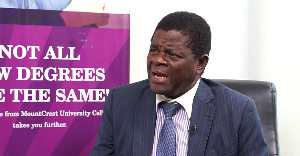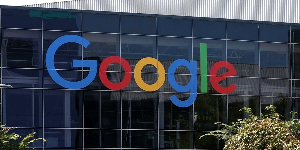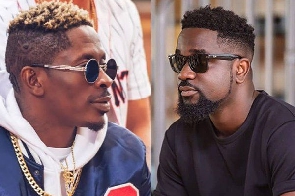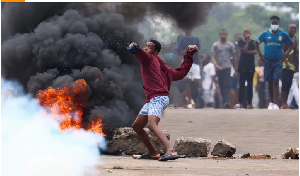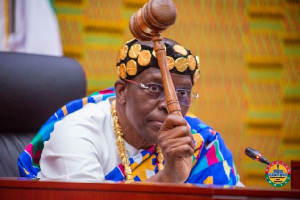Sports News of Wednesday, 16 July 2014
Source: goal.com
'The future' line up at World Cup 2018
All of the major nations will have to make changes between now and the next World Cup, and Goal looks at how they could line up in Russia
Another World Cup is over and the four-year wait begins to see the best national teams from all over the planet scrap it out again in Russia.
The tournament in Brazil was a veritable feast of football, with stars from across the globe showcasing their brilliance, but time catches up on everyone.
So, who will be the next generation of stars to replace the current crop in four years' time? Goal looks at the players who may be setting the world alight in 2018.
After reaching the final in 2014 and restoring some pride on the biggest stage, Argentina will be facing a period of transition. Coach Alejandro Sabella is certain to leave his post, though the change should mostly be isolated to matters off the pitch.
The current Argentina team have an interesting mix of youth of and experience and many players still have a number of years of good service ahead of them. It's hard to say how many Ballons d'Or Lionel Messi will have won by 2018, but it's easy to picture him leading his nation in Russia.
The supporting cast will be getting old, but are likely to stick around, though the emergence of Inter's Mauro Icardi will be too much for Gonzalo Higuain, depending on how the young troublemaker gels with the rest of the team. There are shades of a Carlos Tevez-esque saga, though Icardi is far less popular among fans and media.
Erik Lamela should turn things around and become a regular, while Juan Manuel Iturbe will be pushing either the Tottenham winger or Angel Di Maria for a place in the side.
In defence, Mateo Musacchio should be at the top of his game, if his development thus far continues at his current trajectory and Sergio Romero will keep goal for his third straight World Cup. The big question mark is Javier Mascherano, who'll be 34, but may retain his place due to his charasmatic leadership and versatility.
A lot of talk has focused of who will never play for their country again, but Brazil have a number of players who will be in their prime in 2018. Much will depend on the route Brazilian football decides to take, but with Tite and Muricy Ramalho favourites to succeed Luiz Felipe Scolari, it appears little will change.
Neymar will have a score to settle and at 26 will be at his peak. So too will Oscar, who is the most well-equipped to function as a contemporary No.10. Marcelo will be 30 and likely has a major future with the Selecao. David Luiz will be 31 and, with his leadership qualities, can expect still to be a major player, though at 33 Russia 2018 may be one step too far for Thiago Silva. Luiz Gustavo was perhaps Scolari's best player in 2014 and could also remain.
However, the likes of Fred, Jo and Hulk have likely played their last World Cup. As have Julio Cesar, Dani Alves, Maicon, Dante and Fernandinho.
Napoli goalkeeper Rafael Cabral is one of Brazil's brightest and could secure the No.1 spot should he become a regular in Serie A. Valencia's Diego Alves could also be in line as a contender. Marquinhos looks well-placed to become a leading central defender (by then 24) and looks an adequate replacement for Thiago Silva. Botafogo centre-back Doria is a potential world-beater and should also be in the frame. Porto's Danilo looks set for a big move and is as an athletic and technically-proficient flying right-back.
Spartak Moscow's Romulo is tough and athletic with a range of a passing rarely seen in Brazilian central midfields – his development was cruelly curtailed by serious injury but once back on track he could be a potential star. PSG's Lucas Moura is another that should arrive at the tournament approaching the peak of his powers. Shakhtar Donetsk's Fred will be 25 and in line to make the squad. His club-mate Fernando could also return but both may have to move from Ukraine.
Brazil's real problem lies in the No.9 position, where Brazilian football is suffering a severe drought. Hernane and Alan Kardec probably aren't up to the standard. Alexandre Pato has immense potential but is increasingly looking like a lost cause. Leandro Damiao’s career has taken a nose dive in recent seasons but should he secure a move to Europe and get back on track then he still has the potential to lead the Selecao's attack. Teenage Santos sensation Gabriel will be 21 and could be a potential wild card.
England were a team in transition ahead of this summer's World Cup and many who made it into Roy Hodgson's squad are likely to feature at Russia 2018.
Steven Gerrard and Frank Lampard will no longer be the senior figures - that responsibility will be passed on to Joe Hart, Gary Cahill and Wayne Rooney, who will be 31 and 32 by the next tournament.
Hart's place as England's first-choice goalkeeper looks cemented for the foreseeable future, as does Cahill's spot in central defence, but Rooney may lose out in competing with Ross Barkley, Alex Oxlade-Chamberlain and Raheem Sterling for a role behind Daniel Sturridge.
Theo Walcott missed this World Cup due to a knee injury but will face a similar scenario to Rooney and Adam Lallana in fighting for a place in attack by the time Russia 2018 is upon us.
In defence, Glen Johnson will be 32 by the time of the next World Cup, but his Liverpool team-mate Jon Flanagan is adept at playing on either side of a back four and looks a strong candidate to fill the right-back spot.
John Stones impressed for Everton last season when deputising for the injured Phil Jagielka and made it into Hodgson's stand-by list for the World Cup. The 20-year-old's assured distribution and ability to read defensive situations makes him an ideal partner for Cahill in the long term. Southampton duo Calum Chambers and James Ward-Prowse should flourish in their development under Ronald Koeman. Ward-Prowse impressed at this summer's Toulon Tournament and a senior England cap shouldn't be too far away.
France find themselves in a reasonable position with 2018 in mind, as the squad that was taken to Brazil was relatively young, with the bulk of the players used by Didier Deschamps set to be available in four years.
Franck Ribery missed 2014 due to injury and had hinted previously that this would be his last World Cup in any case, so while it is not completely implausible for him to be there, at the age of 35 it has to be considered very unlikely.
While the successor to the Bayern Munich star is likely to be Antoine Griezmann, who operates on the right is harder to pick, though Kingsley Coman, who has just moved to Juventus from Paris Saint-Germain, could be a candidate. Florian Thauvin of Marseille is another possibility, though his growth has been rather stunted over the last 12 months.
The right-back role is another void that may need filled, though there are a lack of alternatives, which mean that Mathieu Debuchy may retain his spot. On the left there are numerous options to fit in the place of Patrice Evra, with Lucas Digne the outstanding choice over Eliaquim Mangala, probably better suited to a central role in the long run, as well as Samuel Umtiti. Kurt Zouma has shown he can play in that position, though like Mangala his future is as a centre-back.
France have an abundance of talented young defenders and there will be a real battle to start beside the classy Raphael Varane, with Aymeric Laporte perhaps in the best position to step into the side. Mamadou Sakho will be difficult to displace, though.
Further forward, it will be difficult for youngsters to make inroads. Paul Pogba should be one of the best players in the world in four years at the age of 25, while unless Blaise Matuidi has lost his legs he is liable to be a feature of the midfield along with Yohan Cabaye or Morgan Schneiderlin.
In attack, meanwhile, Karim Benzema has rarely produced his best level for the national team, but a lack of other options coming in mean it is likely that he will continue to start. Nice youngster Neal Maupay, who will be 21 for Russia 2018, is a penalty-box poacher who could be another viable option, while Paul-Georges Ntep could take a spot on the wing.
Germany approached the 2014 World Cup with a very young team once again and many of the players who took to the field in Brazil will still be around - and in their prime - when the tournament comes to Russia in four years' time.
Manuel Neuer is a lock in goal and will be for years to come, though Marc-Andre ter Stegen will provide him with keen competition looking ahead, but the right-back area could prove problematic, with Philipp Lahm, 31 later this year, not getting any younger.
Jerome Boateng can fill that void, but would ideally be at centre-back, though with no obvious successor to the Bayern Munich skipper waiting in the wings, he may well be shunted out to full-back, with Matthias Ginter partnering Mats Hummels at the heart of defence and Marcel Schmelzer at left-back.
Toni Kroos has long been groomed as Bastian Schweinsteiger's successor and Germany's No.7 will be 33 by the time the competition kicks off in Russia, so his younger colleague will probably be trusted with a spot in midfield alongside Sami Khedira, who will be 31, a senior figure and potentially even captain.
Of course, they have an embarrassment of riches for the front four positions. Mesut Ozil will still be No.10 in his thirtieth year, Marco Reus could play on the right, with Mario Gotze completing the triumvirate supporting Thomas Muller. These players will have the likes of Julian Draxler, Kevin Volland and Max Meyer for competition.
There will be a big turnover of players when Russia 2018 comes along following Italy's disaster in Brazil. Daniele De Rossi, Andrea Pirlo, Andrea Barzagli and Antonio Cassano will all be too old and while Gianluigi Buffon insists he wants to go to a sixth World Cup at the age of 40, the impressive Salvatore Sirigu will surely have the No.1 shirt. The Azzurri also have some talented young goalkeepers coming through, particularly Udinese's Simone Scuffet.
One area of concern for Italy is a lack of young defenders, although young Juventus centre-back Daniele Rugani certainly looks the pick of the bunch and could partner Giorgio Chiellini in his final tournament. Another Bianconero, Leonardo Bonucci, will still be in the squad. Roma's Alessandro Romagnoli is one to keep an eye on. Current first-choice full-backs Mattia Darmian and Matteo De Sciglio will be in their prime in 2018.
The Italy team will be built around PSG wonderkid Marco Verratti, the heir to Andrea Pirlo, who will be Italy's regista. Roma's Alessandro Florenzi is also comfortable on the ball, while Fiorentina's Romulo could be the workhorse in the centre of midfield if he retains his physical qualities at the age of 31. Napoli's Jorginho could prove to be an ideal backup to Verratti, with Juve's Simone Sturaro, Atalanta's Daniele Baselli and Lazio's Antonio Candreva making up squad numbers.
In attack, Italy have a host of promising forwards but everything will depend on how they develop in the coming years. On the wings, Juventus-owned Domenico Berardi and AC Milan's Stephan El Shaarawy have the pace and dynamism to be exciting players come 2018. But they have competition from the likes of Roma's Mattia Destro, Juve's Manolo Gabbiadini and Napoli's Lorenzo Insigne. In the centre of attack, Mario Balotelli will be the perfect age at 27 to fulfill his potential - but it is never easy predicting what will happen with the controversial striker. Other possibilities are Dortmund's Ciro Immobile and Fiorentina's Giuseppe Rossi, who will be 31.
Netherlands will probably have to make do without experienced players such as Robin van Persie, Arjen Robben, Wesley Sneijder and Dirk Kuyt when they travel to Russia in four years time, but a large part of their 2010 World Cup squad is expected to remain part of Oranje for the next few major tournaments.
Jasper Cillessen and Tim Krul will still be fighting for the No.1 position, while PSV goalkeeper Jeroen Zoet will be hopeful of making the cut as well for the 2018 World Cup.
In defence, Daryl Janmaat, Stefan de Vrij, Bruno Martins Indi and Daley Blind – who all impressed in Brazil - will still be relatively young when the tournament in Russia kicks off, while Joel Veltman and Terence Kongolo will also fancy their chances of travelling. With Gregory van der Wiel and Jetro Willems returning from injury and promising youngster Karim Rekik raring to go, too, Holland's defence seems to be all sorted for the foreseeable future.
Nigel de Jong could very well be one of the veterans of the Dutch squad in 2018, with Marco van Ginkel and Kevin Strootman likely to occupy the other two midfield spots. Youngsters like Georginio Wijnaldum, Tonny Vilhena and Adam Maher will all be dreaming of featuring at the World Cup as well.
Forwards Robben, Van Persie and Kuyt are expected to say farewell to the international game in the next few years, making way for hot prospects such as Memphis Depay, Jean-Paul Boetius, Quincy Promes and Luciano Narsingh. Holland seem to be lacking a young No.9 who could be ready in 2018 at the moment, yet Ajax wonderkid Richairo Zivkovic might be a candidate if he keeps up his stunning development from last season.
After their surprise failure in Brazil 2014, it's likely to be a very different Spain side at the next World Cup.
Xavi, Xabi Alonso and Iker Casillas will all be long gone by 2018, while Andres Iniesta will be approaching the end of his career at the age of 34. Sergio Busquets, Jordi Alba and Sergio Ramos should still be involved, but the rest of the side will bear little resemblance to the teams that started against Netherlands, Chile and Australia this time around.
It remains to be seen whether the Diego Costa experiment will work out in the long term, but the Chelsea forward wants to be involved and will likely be part of the set-up if he can prove himself for Spain.
Real Madrid's exciting young winger Jese should play a part on the left, with Barca's brilliant forward Gerard Deulofeu set to be involved on the opposite flank. In midfield, Bayern Munich's Thiago can pull the strings in the Xavi role, with Atletico Madrid's Koke likely to be involved as well.
In goal, David de Gea will soon be handed the starting spot and will be just 27 in 2018, while Madrid's right-back Dani Carvajal looks to be the future in that position and Real Sociedad's Inigo Martinez deserves a chance to prove himself in central defence.






